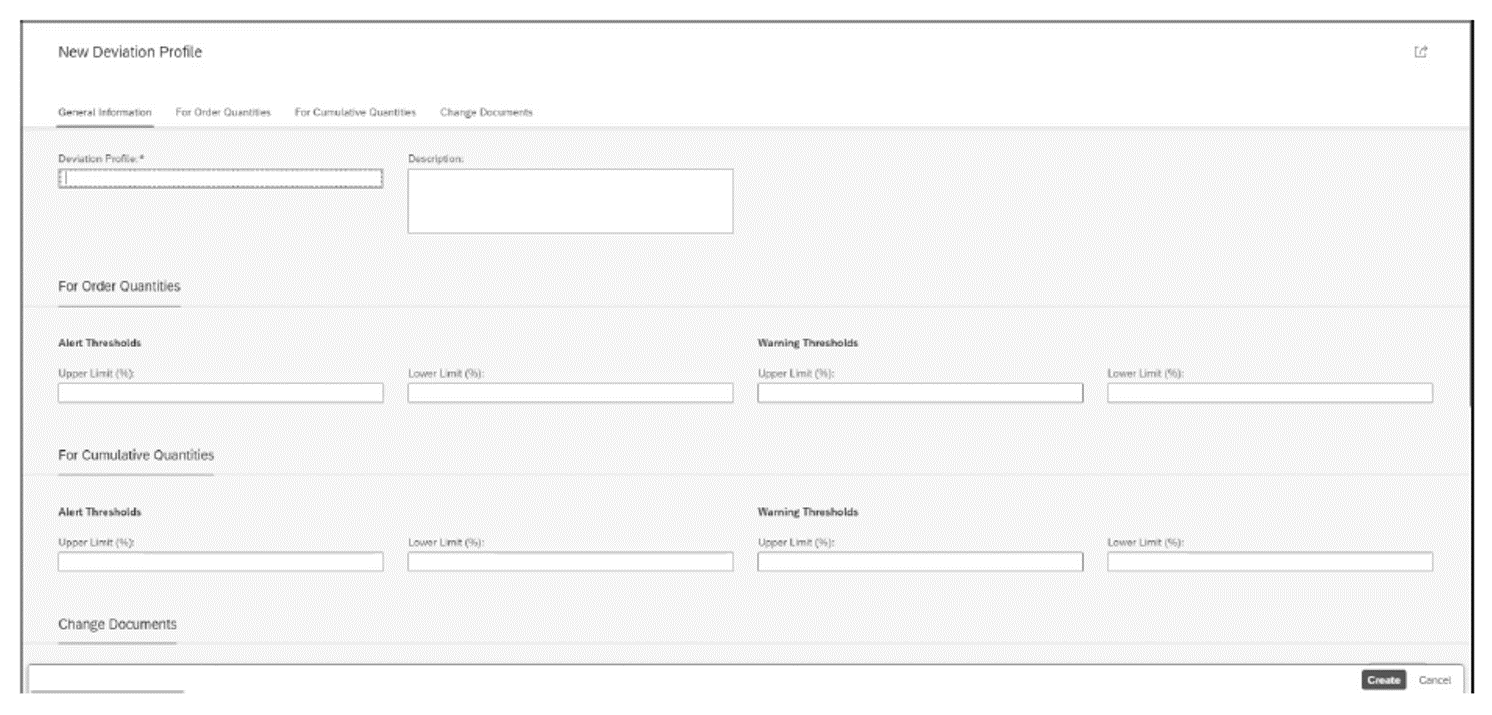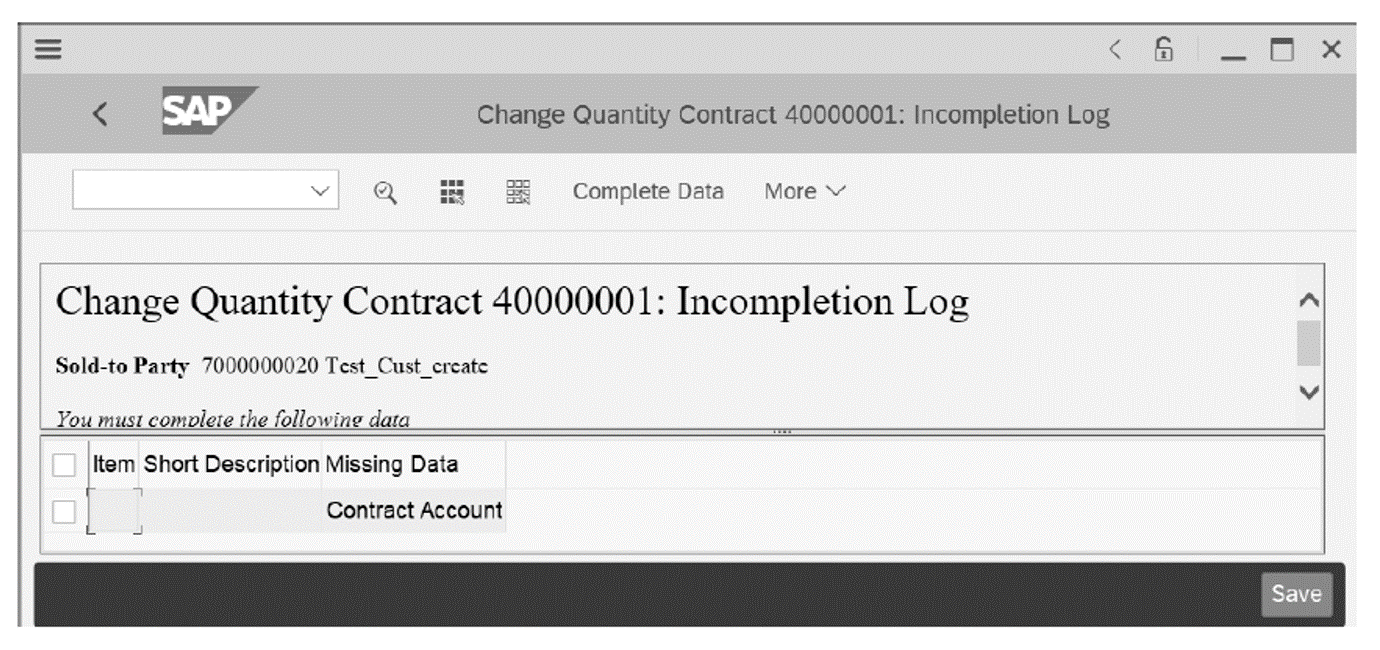Logistics functionality in SAP S/4HANA (also termed SAP S/4HANA Logistics or SAP Simple Logistics) supports the creation, processing, and analysis of sales contracts with customers.
Furthermore, you can easily address and analyze expiring sales contracts using SAP Fiori apps to gain a better understanding of fulfillment rates.
There are two main types of sales contracts. A quantity contract is an agreement between the company and the customer, who agrees to purchase a given quantity of a material at a given price within a given time period. A value contract is an agreement between the company and the customer that contains the materials and services the customer will receive within a given time period, up to a given value.
Contracts can be fulfilled through a single sales order or through multiple sales orders that are called from the contract during the specified time period. These release orders must be created with reference to the contract. If the customer knows the dates of fulfillment at the time of creation, a scheduling agreement can be created in place of the contract.
Let’s look at key SAP S/4HANA Logistics functionality for sales contract management.
Creating, Changing, and Displaying Sales Contracts
SAP Fiori and SAP S/4HANA allow you to search for and analyze contracts within the system, which helps both users and managers better handle and understand their contract pipeline. After a contract is determined to be required in SAP S/4HANA, you can use the Manage Sales Contracts SAP Fiori app to find contracts according to filter criteria and display them in a list. In the example below, nine sales contracts are listed. The 2021 release of SAP S/4HANA includes the additional filter Approval Status allowing you to filter contracts based on the status and to initiate the appropriate follow-up actions. The available statuses are Approval, Not Relevant, Rejected, Released, and To Be Reworked.

From this app, you can navigate to the Create Contracts screen.

Additional customer information such as ship-to, sold-to, purchase order number, and the validity dates of the contract can be entered into the contract. The validity dates are mandatory fields in contracts. Supplemental information, such as description, order reason, and master contract, can be added in the contract header details, if necessary. As parts of the contract, the materials or services need to be provided o the document with the specific agreed-upon quantity. The agreed-upon value for the products and services is also included in the contract. After the contract is saved in SAP Fiori, you can use the Display Contract app to view it and the Change Contract app to modify it.
The Manage Sales Contracts app supports the exporting of contracts to a spreadsheet. Thanks to a new OData service, you can now retrieve sales contracts to a spreadsheet. Thanks to a new OData service, you can now retrieve sales contracts that are blocked due to negative credit checks, and you can perform check, read, and release operations. You can also update and delete sales contracts in the SAP Fiori frontend.
The 2021 release of SAP S/4HANA comes with different features to view the legal transactions and product compliance statuses. The product compliance status includes information on product marketability, dangerous goods, and safety data sheets. In the Manage Deviation Profile app, shown below, you can define the thresholds for deviations in order quantities and in cumulative order quantities by creating deviation profiles.

List Incomplete Sales Contracts
When the list of incomplete contracts is displayed, a contract can be accessed from the application directly instead of using a different transaction to update the contract. Through the List of Incomplete SD Documents app, you can easily check the contract data and documents that are incomplete. With SAP S/4HANA's newest version release, this app allows you to identity contracts with different incompletion issues. The figure below shows the flexible search options provided through this SAP Fiori app; in our example, no search parameter is added, which returns all incomplete contracts.

You can then drill down into a particular contract to access the details regarding the incomplete status, as shown here.

In the figure below, you can see that the contract is missing Details of an Incomplete Sales Contract data, according to the incompletion log of the document. Due to the incompletion, the contract cannot further process the document.

After resolving the contract issues, you are brought back to the incompletion list screen to continue fixing the incompletion issues.
By using the List Contract app, contracts can be listed based on a variety of selection criteria, including the material, customer, person responsible, sales document category, sales document type, and date on which it was created. For easy and effective contract handling, you can use SAP Fiori apps to list expired contracts, completed contracts, and contracts that are expiring soon. SAP Fiori allows you to access contracts directly through these lists instead of searching for the contract number and using a different transaction to view the contract. The figure below shows the Incomplete Sales Documents app, where you can filter contracts based on the sales and distribution document category, the document type, and various other fields

Sales Contract Fulfillment Rates
Management can use the Sales Contract Fulfillment Rates app, considered one of the most powerful SAP Fiori apps, to identify contract fulfillment rates across sales organizations, employees, customers, and materials. For example the figure below shows the completion rates for different sales organizations. The top 10 contracts by target value can be easily identified in the app. Through the ability to drill down further into contracts based on real-time data, managers no longer need to wait for period to close or contracts to expire to analyze sales contracts. In addition, you can use situation templates to notify specific users about contracts that are being fulfilled at a slower or faster rate than expected.

Manage Subscription Contracts
The process of subscription contract management allows you to bundle complex contracts across multiple service and product offerings. You can manage contracts for customers by adding new items, removing contract elements, modifying terms, and tracking usage. You can do this in one of two ways in SAP S/4HANA.
For simple subscription scenarios, where a customer is paying a set amount over a period of time (e.g., monthly payments over the course of a year), you can user a value contract to manage the process. A value contract has a billing plan outlined at the item level. Based on the billing plan, down payment requests are generated and posted to the customer's account when a payment is made. Deliverables can be called against the value contract throughout the validity posting. At the end of the contract, the down payment balances are used to clear the open balances from the deliveries, and the contract can be closed or extended.
The Manage Sales Contracts app is used to process subscription contracts in SAP S/4HANA. The figure below shows a settlement against a contract over the course of a year through monthly payments based on a defined billing plan. The customer makes these monthly payments be creating down payment request documents. After all the items are delivered and the open balances are cleared, this subscription contract can then be closed.

The Manage Customer Down Payment Requests app, shown below, allows you to create down payment requests that are posted to customer accounts and against which payment is made.

For more complex subscription scenarios, you can use the cloud applications in SAP Customer Experience to support subscription order management.
Conclusion
Those who have made the migration to SAP S/4HANA have likely already explored the functionality and SAP Fiori apps listed above. But for those who have yet to move to SAP S/4HANA, you should now have a better understanding of how SAP S/4HANA handles sales contract management.
Editor’s note: This post has been adapted from a section of the book Logistics with SAP S/4HANA: An Introduction by Deb Bhattacharjee, Vishal Khandalkar, Falguni Thompson, and Guillermo B. Vazquez. Deb is a Deloitte principal and partner a thought leader in supply chain strategy, supply chain planning, and inventory planning and management. Vishal is a senior technology transformation leader at Deloitte. Falguni is a managing director at Deloitte, where she is a leader in digital transformation within Deloitte’s Enterprise Performance offering. Guillermo is a senior technology executive, leading multimillion-dollar SAP global programs with Fortune 500 companies.
This post was originally published 4/2020 and updated 4/2022.



Comments